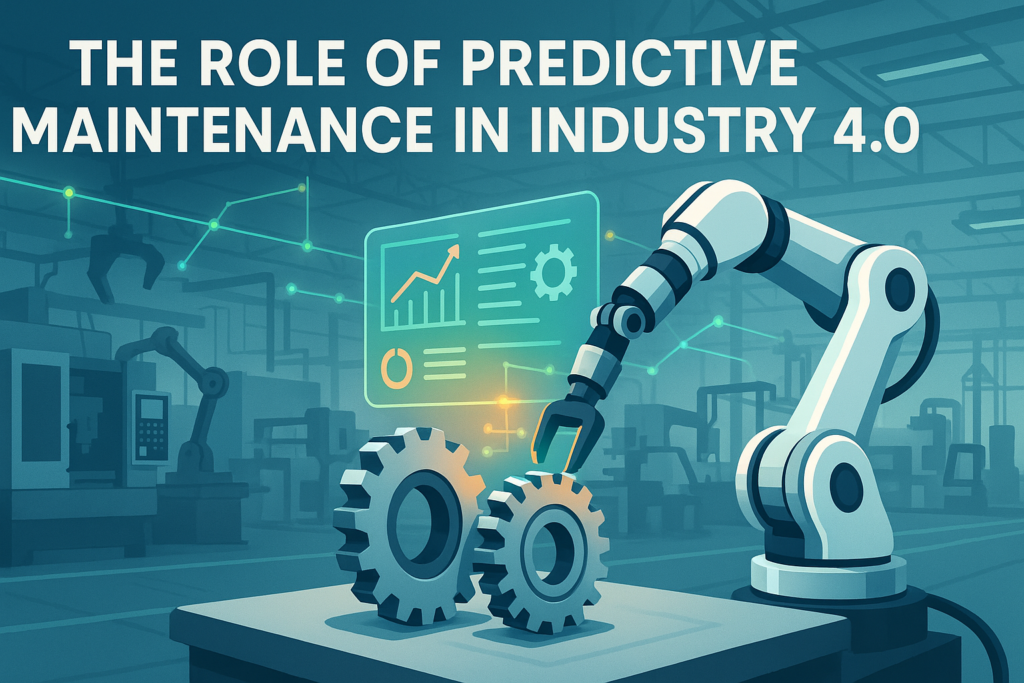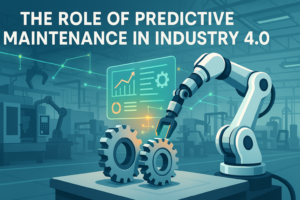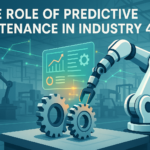The Role of Predictive Maintenance in Industry 4.0
Welcome to the future of manufacturing, where machines talk, data predicts, and efficiency rules. In this blog post, we’ll explore how predictive maintenance is transforming Industry 4.0, making our factories smarter and our businesses more profitable. Let’s dive in! 🚀
Table of Contents
1. What is Predictive Maintenance?
2. Benefits of Predictive Maintenance
3. How Does It Work?
4. Challenges and Solutions
5. Conclusion
6. FAQs
What is Predictive Maintenance?
Imagine being able to foresee potential machine failures before they happen. Sounds like magic, right? 🧙♂️ That’s predictive maintenance for you! It’s a strategy that uses data analysis and advanced algorithms to predict equipment failures, allowing businesses to schedule maintenance before a breakdown occurs. This proactive approach is a cornerstone of Industry 4.0, the fourth industrial revolution characterized by smart technology, AI, and IoT.
Benefits of Predictive Maintenance
Predictive maintenance is not just a buzzword; it’s a game-changer for industries worldwide. Here are some key benefits:
1. Reduced Downtime: Say goodbye to unexpected halts in production. By predicting when a machine will fail, businesses can perform maintenance during scheduled downtimes, ensuring continuous operation. 🏭
2. Cost Savings: Preventive repairs are usually cheaper than fixing something after it breaks. Predictive maintenance helps in reducing repair costs and extending equipment life.
3. Increased Safety: By predicting equipment failures, companies can avoid hazardous situations, ensuring a safer working environment for employees. 👷♀️
4. Optimized Resources: With precise data, companies can allocate resources more effectively, improving overall operational efficiency.
How Does It Work?
Wondering how all this magic happens? Let’s break it down:
Data Collection: Sensors are installed on machines to gather data on various parameters like temperature, vibration, and sound.
Data Analysis: The collected data is analyzed using machine learning algorithms to detect patterns that precede equipment failure.
Predictive Modeling: These patterns are used to create models that predict future failures, providing actionable insights to maintenance teams.
Actionable Insights: Maintenance teams receive alerts about potential issues, allowing them to address problems before they escalate.
Challenges and Solutions
While predictive maintenance is revolutionary, it’s not without challenges. Here are some common hurdles and their solutions:
Data Overload: The sheer volume of data can be overwhelming. Solution? Implement robust data management systems to filter and analyze relevant data.
Integration Complexity: Integrating new technologies with existing systems can be tricky. Solution? Work with experienced tech partners who understand your industry’s needs.
Initial Costs: The upfront investment can be significant. Solution? Focus on long-term ROI and consider phased implementation to spread costs over time.
Conclusion
Predictive maintenance is a critical component of Industry 4.0, offering numerous benefits that can transform how businesses operate. By leveraging data and technology, companies can ensure smoother operations, reduce costs, and enhance safety. As we move deeper into the digital age, embracing predictive maintenance will be key to staying ahead of the competition. 🌟
FAQs
Q: How does predictive maintenance differ from preventive maintenance?
A: While preventive maintenance is scheduled at regular intervals regardless of equipment condition, predictive maintenance uses real-time data to predict when maintenance is actually needed, making it more efficient.
Q: What industries benefit the most from predictive maintenance?
A: Industries like manufacturing, automotive, energy, and aviation typically benefit the most due to their reliance on heavy machinery and complex systems.
Q: Is predictive maintenance suitable for small businesses?
A: Absolutely! While the initial investment might seem daunting, the long-term savings and efficiency gains can be significant for businesses of all sizes.
Q: What kind of data is used in predictive maintenance?
A: Common data types include temperature, vibration, pressure, and sound, collected via sensors attached to the equipment.
Q: Can predictive maintenance be applied to all types of equipment?
A: Most equipment can benefit from predictive maintenance, but the effectiveness depends on the ability to collect relevant data and analyze it accurately.













